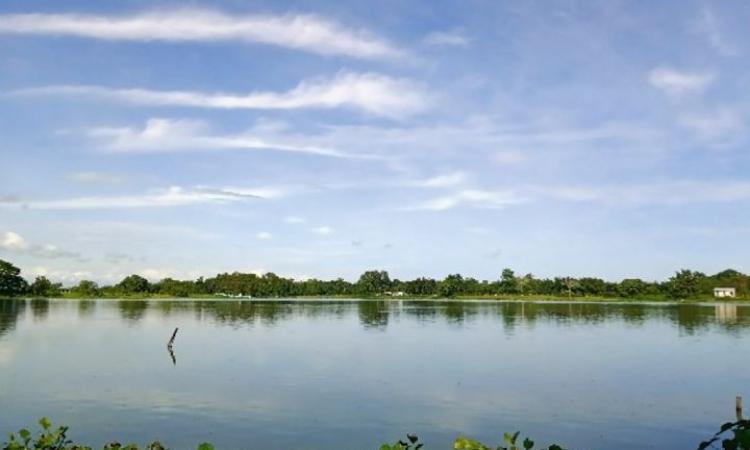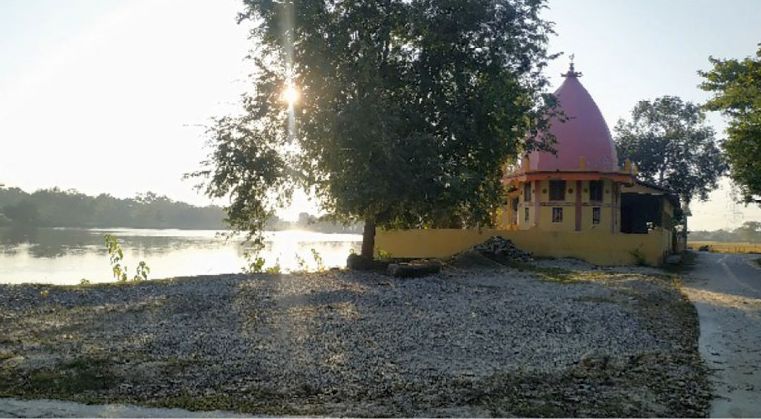
Smaller water bodies, such as ponds, are important not only for biodiversity (Oertli, Céréghino, Hull, & Miracle, 2009) but also for a range of multidimensional utility and benefits linked to them. Ponds across an intensive agricultural landscape provide a home for diverse communities of plants, and invertebrates (Gledhill, James, & Davies, 2005) support different floral and faunal compositions.
In terms of services, ponds offer sustainable solutions to key issues of water management and climate change such as nutrient retention, rainfall interception, or carbon sequestration (Céréghino, Boix, & Cauchie, 2014). The historical ponds that serve as habitats to aquatic species, avifaunal species, and reptiles in their ecosystems have ensured the richness in diversity (Halls, 1997).
The study Historical ponds of Darrang district: Identification and mapping, their ecological relevance for management planning by Deka et al recorded thirty-seven historical ponds in the Darrang district with the help of modern technology. The historical ponds were identified based on the historical aspects (ponds excavated during the king dynasty) and myths.
Darrang district has the highest number of ponds in the state (361 as per Medhi, n.d.), though some were barely known to people. These historical ponds were mapped using modern technology, and their ecological relevance was assessed by identifying the wetland birds, reptiles, and amphibians.

The study recorded thirty-seven species of waterfowl birds, four species of reptiles, and one species of amphibians. It further identified a few ponds that need immediate attention for ecological restoration for wetland birds, mammals, and reptiles. Three species on the IUCN endangered list were also recorded from the ponds.
Among the thirty-seven ponds, the Lakhimpur pond is one of the largest, while the Kina pond is the smallest. The pond named Khoradop went extinct following the flood in 2007. The three historical ponds now on the verge of extinction are Barhampur, Kamalakunwari, and Samaleswari.
The historical ponds were drawn from the Survey of India topographical maps (1971) and the current pond map was extracted from SAR data with 10 m spatial resolution.
The survey found Greater Adjutant (Leptoptilos dubius), an endangered bird rarely seen in the pond ecosystem as their population is decreasing, in Bali Pond, Garaimari Pond, and Kamalakuwari Pond. Like Adjutant, there are two reptiles including Assam roofed turtle (P. sylhetensis) and Malayan Box Turtle (C. amboinensis) which are on the endangered list by IUCN found in Gowalapara pond and Pota pond respectively.
According to the local people, there is a presence of a fishing cat, jungle cat, and common fox in and around the ponds. However, during the survey, the researchers did not record any: either direct or indirect.
Very rare observations were recorded in terms of Grey-headed Fish Eagle (Icthyophaga ichthyaetus), Grey-headed Lapwing (Vanellu scinereus), and River tern (Sterna aurantia). In addition, reptiles, including the Common Indian monitor (Varanus bengalensis), and Water monitor lizard (Varanusn salvator) were commonly found in every pond.
The historical ponds have great significance in the cultural and socio-economic life of the people. Although all the ponds are primarily dug for drinking water, some also cater to irrigation needs. Also, ponds have been used for fish farming in the Darrang district. Freshwater fish farming plays an important role in the livelihoods of rural people of the district.
Lakhimpur pond can be considered as one of the ideal fish production ponds in the district. It produces more than one-ton fish annually, with species like Chitol, Rohu, Kurhi, Mirika, Sal, Sol, and Bahu being common.
The study finds that due to encroachment, pollution, other developmental activities, and people’s apathy many of the historical ponds have been lost, and many are on the verge of extinction.
Negligence of local people and government authorities is leading to the disappearance of ponds. In addition, many historical ponds are now on the verge of disappearing, and this situation demands immediate attention as this may lead to massive loss of aquatic biodiversity. The tortoise in Suri and Paskiya ponds are on the verge of extinction due to the illegal extraction of meat by local communities. Unfortunately, the ponds like Barhampur and Samelswari had already lost many such precious aquatic fauna and are now on the verge of extinction.
The study identified a few ponds that need immediate attention for ecological restoration for wetlands birds, mammals, and reptiles. The district needs to organize a general awareness drive on the conservation of ponds and their habitat for wild species. Government should take initiative to save the historical ponds and create a potential tourism sector.
The full paper can be accessed here
/articles/assam-technology-used-map-historical-ponds-darrang